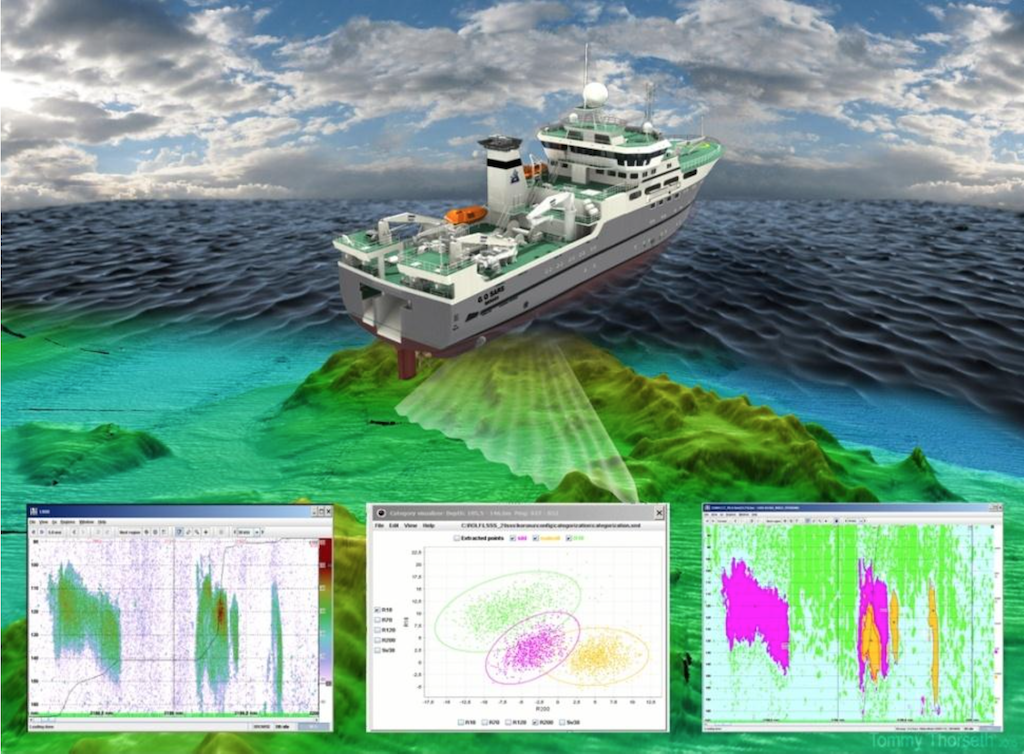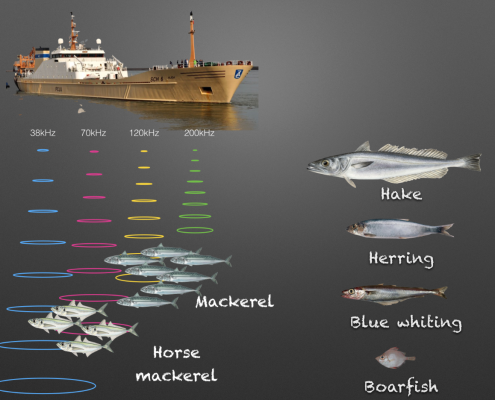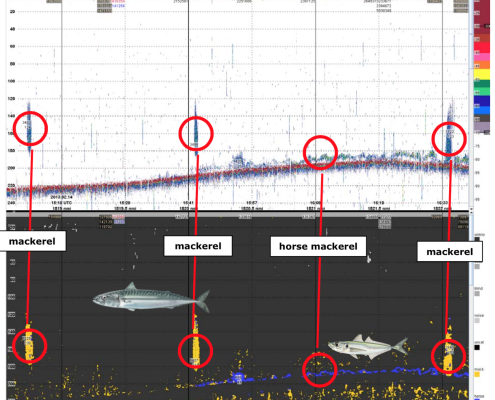Echosounder species identification
☛ Landing obligation will require a more conscious fish finding approach
Before the skipper decides to fish on the schools he observes on his sonar and echosounder he has to decide if the school of fish is worth going for.
Until now unwanted catches are slipped and the skipper will try to catch a clean school. With the discard ban, this is no longer allowed. Technologies that help the skipper to make a more informed judgment on which species he can expect in the school would allow him to choose clean schools, thus avoiding the problem of bycatch.
☛ Three science based technologies are being tested in the Netherlands: an overview
SEAT, fronted by Sustainovate, uses a multifrequency echosounder technology to create acoustic fingerprints of fish species. Although this is a simple principle, the practical application is much more complicated. Environmental circumstances will affect the acoustic reflections, but things become much more complicated when the school of fish consists of more than one species. SOFIC uses a wideband sonar to create acoustic fingerprints of fish species that are based on other parameters than differences in frequency response. EK80 uses the SEAT principle but with added broadband features in the higher range. The development of the Ek80 approach is at an very premature stage.



